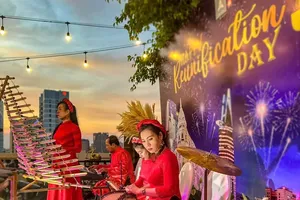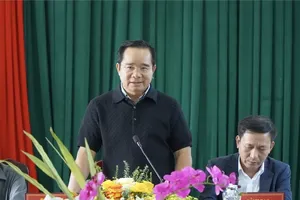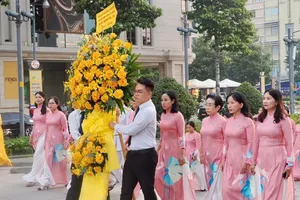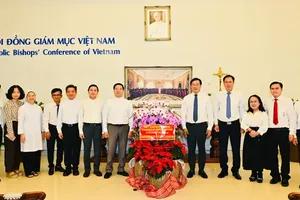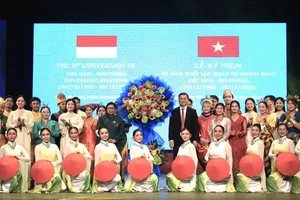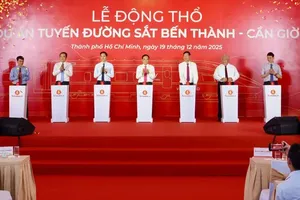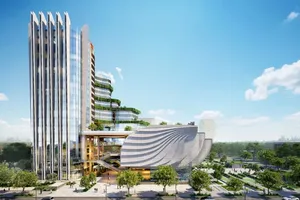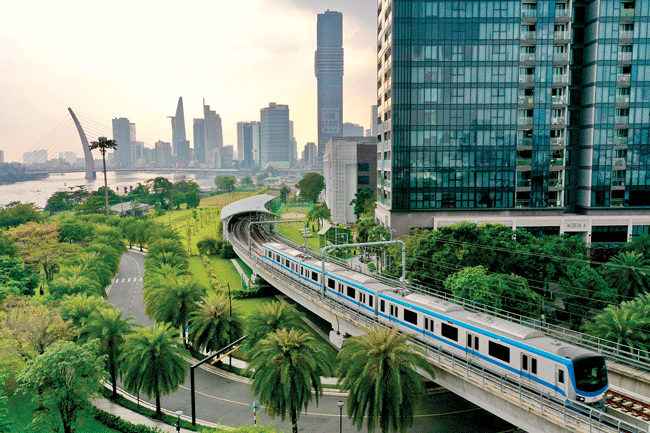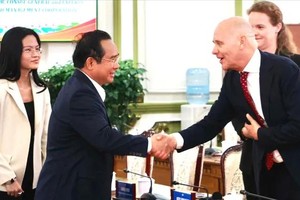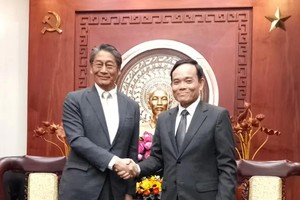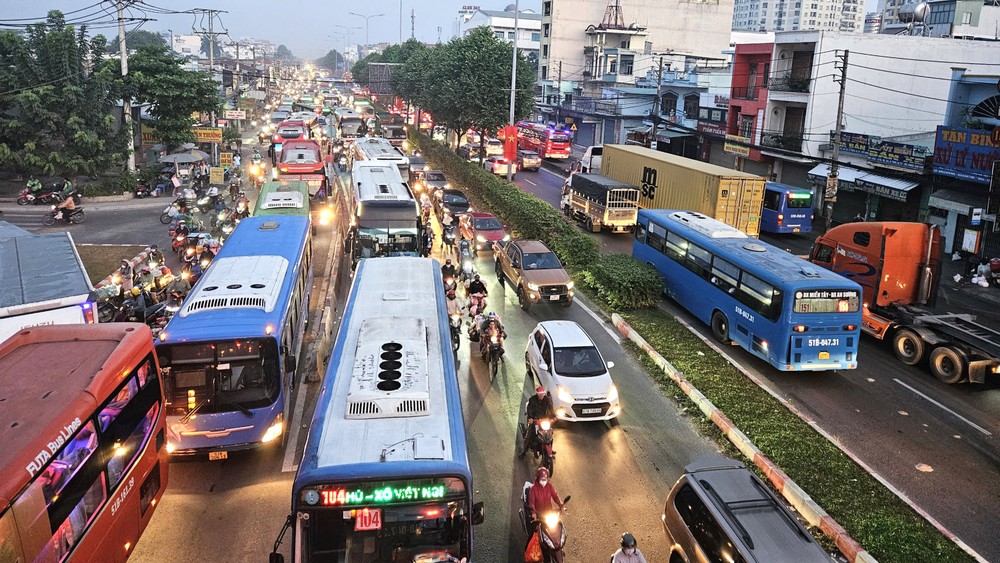
How to solve the capital problem?
For many years, the Highway 22 passing through Ho Chi Minh City’s District 12 has continuously seen traffic congestion when the volume of vehicles carrying goods from the Southern Province of Binh Phuoc to Ho Chi Minh City increased during national holidays.
Food businesswoman Nguyen Thuy Linh at the intersection of Highway 22 - Nguyen Anh Thu in District 12 who is accustomed to the sight that many motorcyclists run on sidewalks during congestion and chaotic traffic complained that the road surface is degraded while dust generated from frequent traffic congestion make residents in the street uncomfortable. She hoped that this route would soon be upgraded and expanded.
Similarly, many gateway roads in Ho Chi Minh City are currently overloaded. For instance, the Highway 13 from Binh Phuoc intersection to Binh Trieu Bridge, has only 4-6 lanes with narrow road surfaces while the number of vehicles is increasing resulting in frequent traffic congestion in the Highway, especially during rush hours.
According to the Ho Chi Minh City People's Committee, along with the National Highway 13 and the National Highway 22, other gateway routes such as the National Highway 1 and the National Highway 50 have not been invested in and upgraded according to planning whereas more and more vehicles travel in the two highways; as a consequence, they are frequently overloaded, causing prolonged congestion, affecting the city’s socio-economic development. Therefore, the Ho Chi Minh City People's Committee decided to use the Resolution 98 for construction investment projects to upgrade, expand and modernize existing road works that are eligible for build-operate-transfer (BOT) contracts.
The application of BOT contracts to upgrade and expand gateway routes helps Ho Chi Minh City solve the problem of capital allocation when private investors participate in these projects. According to Head of HCMC Institute of Economy and Management Tran Quang Thang, the southern metropolis needs a huge capital for its transportation infrastructure projects.
The application of BOT contracts for transportation infrastructure projects and attracting investors opens up opportunities for the city to improve infrastructure because the limited city budget cannot be enough to implement all large projects. Accordingly, if the city can attract private economic sectors to participate, it will create boost the acceleration of infrastructure progress. However, to ensure progress and feasibility, the city needs to have clear criteria for assessing investors' potential and experience.
Acceleration of BOT project progress
After the People's Council of Ho Chi Minh City approved the list of five BOT projects on existing roads, in early 2024, the municipal People's Committee issued a plan to implement these projects. In particular, the City People's Committee assigns specific tasks to heads of relevant departments, agencies and localities in developing specific programs and plans associated with work programs to effectively implement projects as per a fixed schedule.
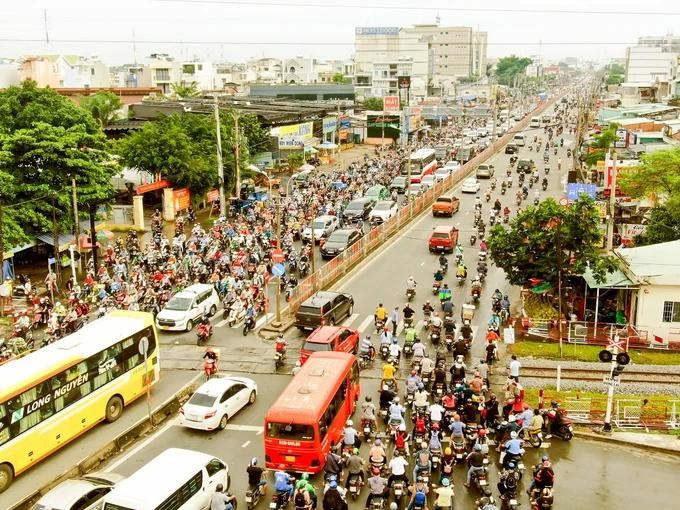
During the implementation process, related agencies survey investors' interest in the project, prepare and appraise feasibility study reports, approve projects and select investors, sign project contracts in 2025 as well as implement project contracts from 2025 to 2028. Construction of projects is expected to start from quarter 4-2025 and quarter 1-2026 and they will be put into operation in the following years.
Ngo Hai Duong, Head of the Road Traffic Infrastructure Management and Operation Department under the Ho Chi Minh City Department of Transport said that the department is currently preparing a pre-feasibility study with five BOT projects on existing roads to submit for the approval of the city People's Council. This must be done this year.
According to a representative of the Ho Chi Minh City Department of Transport, the Resolution 98 allows up to 70 percent of the total investment in BOT projects on existing roads taken from the city state budget. Site clearance work is separated into an independent project using city budget capital.
At meetings with departments, agencies and localities, Chairman of Ho Chi Minh City People's Committee Phan Van Mai directed the application of Resolution 98 to speed up the progress of key and urgent projects. Among them, the city ought to expand the National Highway 50, the road connecting Tran Quoc Hoan - Cong Hoa, Nguyen Van Linh - Nguyen Huu Tho intersection, and My Thuy intersection. In addition, the city will focus on completing investment preparation procedures, approving investment policies, approving investment projects for key transportation projects such as the Ring Road 2 project (section 4), the Ring Road 4, Thu Thiem 4 Bridge, and Can Gio Bridge.
